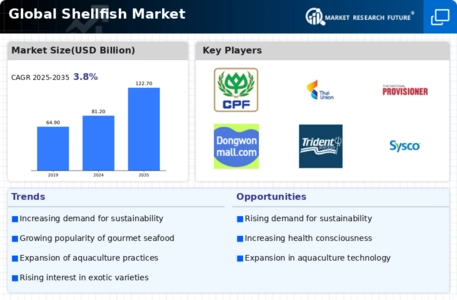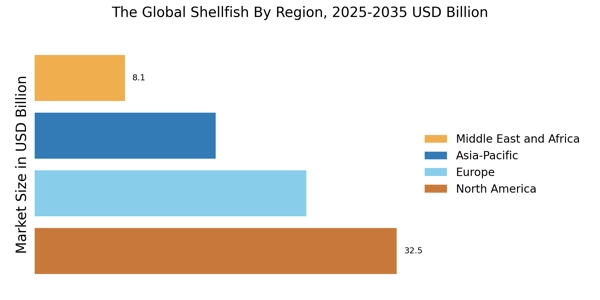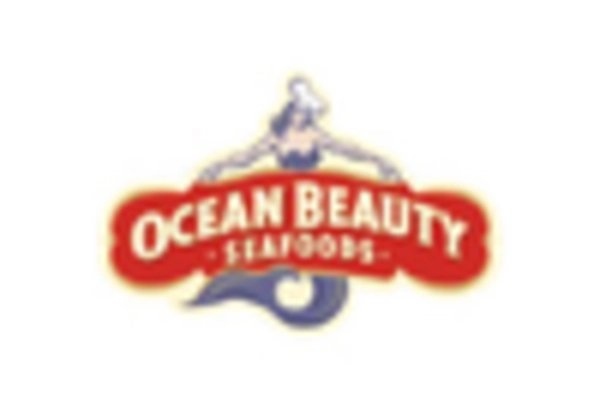Rising Demand for Seafood
The increasing global population and the corresponding rise in demand for protein-rich food sources are driving the shellfish market. As consumers become more health-conscious, they are gravitating towards seafood, which is perceived as a healthier alternative to red meat. In 2023, the shellfish segment accounted for approximately 25% of the total seafood market, indicating a robust consumer preference. This trend is expected to continue, with projections suggesting that the shellfish market could grow at a compound annual growth rate of 4.5% over the next five years. The Global Shellfish Industry is thus poised to benefit from this shift in dietary preferences, as more individuals seek nutritious and sustainable food options.
Culinary Trends and Global Cuisine
The globalization of culinary practices is influencing the shellfish market, as diverse cuisines incorporate shellfish into their dishes. The rise of food tourism and the popularity of international dining experiences are driving demand for various shellfish products. In 2023, shellfish exports reached a record high, with Asian and European markets showing particularly strong growth. This trend indicates that The Global Shellfish Industry is benefiting from the fusion of culinary traditions, as chefs experiment with shellfish in innovative ways. The potential for new product development, such as ready-to-eat shellfish meals, could further enhance market growth, appealing to busy consumers seeking convenience without sacrificing quality.
Increased Focus on Nutritional Benefits
The nutritional profile of shellfish is becoming a key driver in the market, as consumers seek foods that offer health benefits. Shellfish Market are rich in essential nutrients, including omega-3 fatty acids, vitamins, and minerals, which are increasingly recognized for their role in promoting overall health. As awareness of these benefits grows, The Global Shellfish Industry is likely to see a rise in demand from health-conscious consumers. In recent surveys, a significant percentage of respondents indicated that they are more likely to purchase shellfish due to its perceived health advantages. This trend suggests that marketing efforts highlighting the nutritional benefits of shellfish could further stimulate market growth.
Growing Interest in Sustainable Practices
Sustainability has become a focal point for consumers and producers alike, influencing purchasing decisions in the shellfish market. The demand for responsibly sourced shellfish is on the rise, as consumers are increasingly aware of the environmental impacts of overfishing and unsustainable practices. Certification programs, such as the Marine Stewardship Council (MSC), are gaining traction, with a notable increase in the number of certified fisheries. This trend suggests that The Global Shellfish Industry is adapting to meet consumer expectations for sustainability, potentially leading to a more resilient market. As a result, companies that prioritize sustainable practices may gain a competitive edge, appealing to environmentally conscious consumers.
Technological Advancements in Aquaculture
Innovations in aquaculture technology are significantly impacting the shellfish market. Enhanced breeding techniques, improved feed formulations, and advanced water quality management systems are contributing to higher yields and better quality shellfish. For instance, the adoption of recirculating aquaculture systems (RAS) has allowed for more efficient production methods, reducing environmental impact while increasing output. The Global Shellfish Industry is likely to see a surge in production capabilities as these technologies become more widespread. Furthermore, the integration of data analytics and IoT in aquaculture operations is expected to optimize resource use and improve overall sustainability, making shellfish farming more attractive to investors.


















Leave a Comment